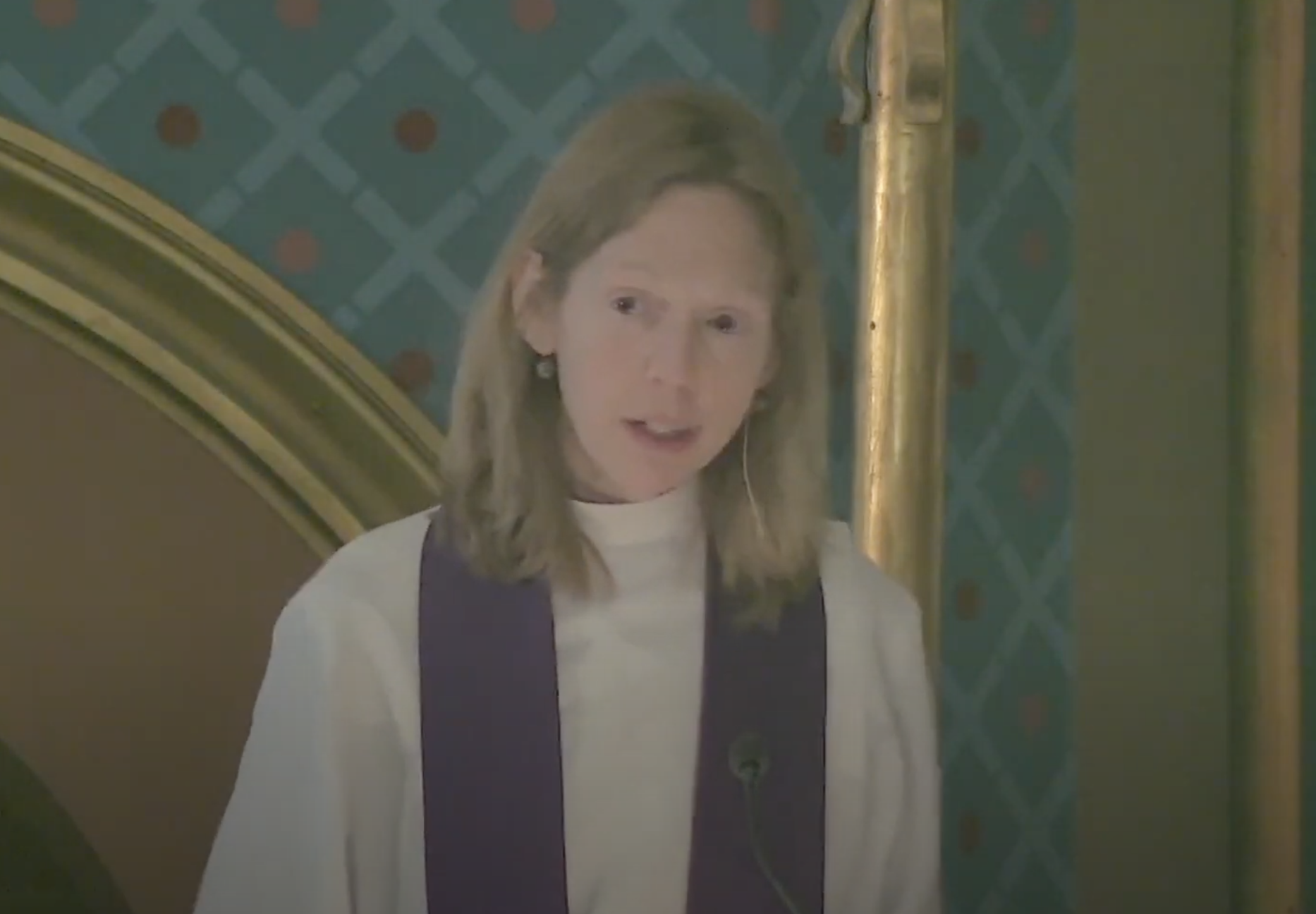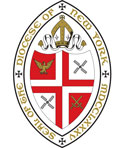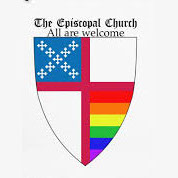Podcast: Play in new window | Download (Duration: 18:00 — 13.1MB)
Subscribe: Apple Podcasts | RSS
Happy Laetare Sunday, everyone – Easter is just 3 weeks away, and today in the tradition of the church our Lenten fast lightens a bit and we get to celebrate, modestly. It is also known as Mothering Sunday, the day when one would visit one’s mother church – the church where you were baptized. So for all of you who are feeling overmuch the rigors of Lenten discipline, today is a day to relax that a little bit. And for all of you who are gloomy for other reasons, like, say, you read the news this morning, well, take today as a chance to lighten up a little as well. No matter how bleak it looks, there are still spring flowers coming up amidst the dry leaves.
I just finished reading a beautiful book called All the Beauty in the World, about our very own Metropolitan Museum. It’s written by Patrick Bringley, who worked there as a museum guard, going there shortly after his older brother died, a young man reeling with the loss of someone he really loved. He’s not a religious person, not raised in the church, but finds incredible solace in the art around him, and in the long stretches of quiet that he has as a guard in the galleries there. At the end, on his last day, he goes back to his favorite piece of art in the whole museum – a scene of the crucifixion, by Fra Angelico. He describes it well – the broken body on the cross; the crowd of people around, mostly not seeming to care; the grieving Mary fainting at Christ’s feet. In Bringley’s time of loss, bewilderment, grief, it is beauty, and most especially the tragic, complex beauty of a crucifixion painting, that anchors him and brings him back to life. That vision of Jesus on the cross brings life, even just hanging in an art museum.
Today’s gospel tell us, Just as Moses lifted up the serpent in the wilderness, so must the Son of Man be lifted up, that whoever believes in him may have eternal life. For God so loved the world that he gave his only Son, so that everyone who believes in him may not perish but may have eternal life.
The image of Jesus lifted up on the cross is tied directly to Moses lifting up the serpent, in that bizarre and troubling passage we heard from Numbers. It comes from the long journey of the Israelites to the promised land, with all the ups and downs in the relationship of God and God’s people. The book of Numbers has seven so-called ‘murmuring stories’ where the people complain and God responds. Lots of complaining, in other words. In this one, the people complain about the food and how long the trip is taking – sounding a little like the kids in the back seat – and God sends in venomous snakes. Not manna, not quail, not water, but pow, snakes. This is the first time God has seemingly punished the people directly for their complaining – perhaps because it’s the first time they’ve complained against God directly, instead of just about Moses. But when the people repent and ask for help, God makes the sign of their suffering to be the sign of their healing: make an image of a snake, God says, and when you look up at it, you will be healed.
Of course the troubling part is, Why does God send the snakes in the first place? We don’t like this idea of God. Of course, the text doesn’t explicitly say the snakes are punishment. But then God doesn’t take the snakes away either – God just provides a means of healing for those who are bitten. It’s not an easily explainable story, and it’s a hard reading.
And perhaps we’d rather leave it there, safely in the mysterious ‘Old Testament,’ about ‘the Old Testament God’ – who, you might recall, is the God that Jesus worships, and the God of our Jewish siblings today, all part of why that mindset is, in fact, a heresy. But leaving that aside, the gospel passage picks this passage right up, directly linking Jesus crucified to the image of the snake. Jesus crucified is also a symbol of suffering and death; and yet Jesus crucified is a sign of life for the world. And then the gospel continues with John 3:16, one of the most famous scripture verses, often the sign and signature of evangelical Christians at sporting events. ‘For God so loved the world,…so that everyone who believes in him may not perish.’ We sometimes read those signs as more about the perishing than the love. But as the passage goes on to say, ‘God did not send the Son into the world to condemn the world, but in order that the world might be saved through him.’ What we see as condemnation and death, God means for life and love. There in a nutshell is the message of Good Friday and Easter. The paradox of the cross; the paradox of human suffering. Troubling truth. Not easily understood – and yet life-giving.
All of this triggers all kinds of things for us. Does God really punish us? Can’t God just take away our suffering altogether? What about the people that died from those snakes? What about those who don’t believe in Jesus? There are about 20 hard questions for preachers embedded in today’s readings – sermons I’ve preached over the years, good, valid hard questions we Christians have to wrestle with. And yet, I hazard to say, in some of that questioning, we can miss the point. Jesus on the cross is about is love and God’s embrace. It’s right there in the language of John 3:16. Everyone who believes in him shall be saved. Or ‘Whosoever believeth,’ in the King James version. Whosoever – everyone, no matter what, is welcome. Whoever believes in him, meaning whoever trusts the revelation of love that Jesus incarnates. Whoever tries to follow in his way of love. Whoever asks for God’s help when we fail.
There’s a quote I came across from the mid-century Black leader Mary MacLeod Bethune. Bethune was a child of enslaved parents who grew up to help found Bethune-Cookman University and became a civil rights leader and an advisor to both FDR and Truman. Bethune was also a faithful Christian, and writing about John 3:16, she said,
With these words [John 3:16] the scales fell from my eyes and the light came flooding in. My sense of inferiority, my fear of handicaps, dropped away. “Whosoever,” it said. No Jew nor Gentile, no Catholic nor Protestant, no black nor white; just “whosoever.” It means that I, a humble Negro girl, had just as much chance as anybody in the sight and love of God. These words stored up a battery of faith and confidence and determination in my heart, which has not failed me to this day.
I wonder if this might be part of why Jesus calls the poor in spirit blessed in his Sermon on the Mount – those who are in real need of God’s saving embrace, they know that embrace. When you’re well established in society, when the world seems on your side, when all is well in life – when you don’t feel as much like you need what God is offering, then it’s comfortable to sit back and hold it all at a distance. Maybe chew over the questions for a while, and then set them down and move on. Then it’s easy to be like the onlookers in Fra Angelico’s painting – idly curious, busy, distracted, bored. We can turn away from Jesus on the cross as just another picture, and not believe. We can stay in our wilderness of snakes and not be healed.
Ultimately the message of the cross, though, is more basic than that: All are loved. All are healed. Death turns to life; condemnation turns to love. All that is needed is for us to look and see. To see not just with our heads, full of all their questions – but with our hearts, ready to know and be known. That is the good news of Good Friday. That is the amazing gospel that is given to us to share with the world. The paradox at the heart of our faith – God’s love in the midst of suffering – isn’t meant to be figured out so much as it’s meant to be lived out.
The Rev. Dr. Kelly Brown Douglass often notes that the church isn’t always good at being church. We’re more often aspiring to be church, she says. And I think this is one of the ways we falter. At the heart of our faith is a treasure that we can so often fail to see – and because we do not see, we do not share it with others. That deep love at the heart of it all is there for us and there for every single one of God’s children in creation. That, church, is a treasure we need to share. We Episcopalians, we progressive Christians, we Upper West Siders spend a lot of time apologizing for our Sunday practice, hiding from our co-workers that we go to church, distancing ourselves from ‘those people’ Christians, downplaying the importance of our worship to the ministry of this parish. As if what we’ve got here is something optional and unnecessary and frivolous, not worth mentioning. Is it really?
But this world needs healing. In ways people know and in ways they don’t, they need the truth of this message of love. Not just in a banner, ‘John 3:16’ – but in the truth of our witness and our lives. Here is a place to come be with people who will love you, misfit that you are. Here is a place that holds up the truth and speaks it – not social media ‘truth’ of the day, but real truth. Here is a place that teaches us to love our neighbor, and even more, to love our enemies. Here is a place that feeds the hungry, that sits with the dying, that prays for the sick and the lost. Here is a place that shows God’s love. You can get a spiritual feeling from watching the sunset – and a dopamine hit from sharing it on Instagram. But real love must be lived out in relationship and community. God loved the world enough to show us what that looks like.
God so loved the world. God so loved you. Think of it. No – don’t think of it, feel it. Let it seep past all your barriers and spread through you for a minute. And then tell me: how are you going to show that love today? How will you be a witness? Whom will you love? So let it be.





